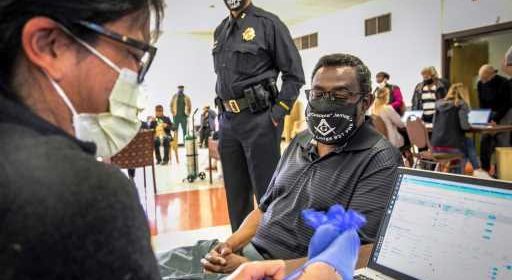What is herd immunity?

The discovery that epidemics don’t last forever in herds of cattle led to one of the most important concepts for fighting disease in humans.
In the early 1900s, veterinarians noticed that once a disease had run rampant in a herd of cattle, it tended to burn out, unless new cows that hadn’t had the disease were brought in.
They called it “herd immunity,” and the name stuck, even when referring to humans.
Generally speaking, a population has reached herd immunity when each infected person passes a virus to no more than one other person, on average, said Dr. Jon Samet, dean of the Colorado School of Public Health.
Under those circumstances, an epidemic will peter out, though some people still will get sick after reaching the herd immunity threshold, he said.
There are two ways to get there: widespread vaccination or, theoretically, infection.
For COVID-19, scientists have estimated at least 70% of the population needs to be immune before we reach herd immunity. Since about 1% of people who get COVID-19 die, that would have meant more than 2 million deaths in the United States alone, if the country had decided to reach herd immunity through natural infection.
Even then, it might not be successful, since unlike herds of cattle, humans can travel freely and mix with others who haven’t been infected.
Scientists have a formula for calculating how much of the population needs to be immune to reach herd immunity, based on how contagious the disease is, but the real world is a little more complicated, Samet said. Not everyone who is vaccinated — or infected — develops lasting immunity, and herd immunity at the national or state level doesn’t do you much good if the people you interact with are still susceptible, he said.
For example, the United States declared measles had been eliminated from the country in 2000 through widespread vaccination and a public health system that quickly responded to measles cases and outbreaks, according to the Centers for Disease Control and Prevention.
But 65 people in Minnesota, most of them children whose parents had fled Somalia, got measles in 2017 after targeted misinformation led many families to forgo vaccines. An even larger outbreak in New York hit the Orthodox Jewish community in 2019.
Measles is one of the first diseases to begin spreading when vaccination rates fall, because it is highly contagious.
“As long as you have pockets of people who are not vaccinated… outbreaks can propagate,” Samet said of herd immunity. “We vaccinate not only to protect ourselves, but ourselves and others.”
Source: Read Full Article